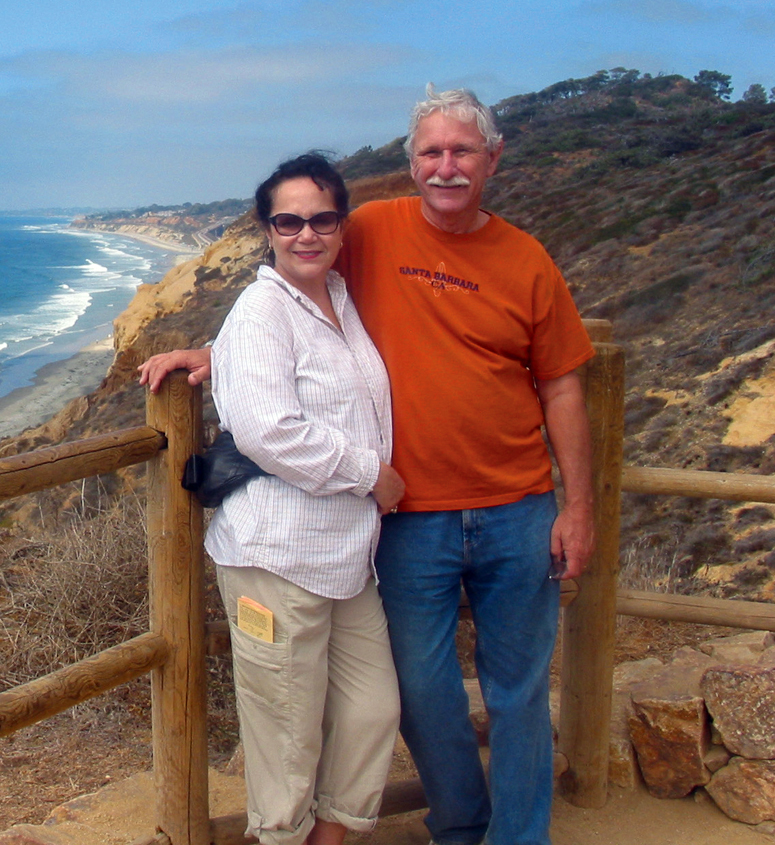
New Book by UCSB Earth Science and Environmental Studies Professor Explores the Natural History of Santa Barbara
For the past 25 years, UC Santa Barbara geologist Edward A. Keller has researched and studied the natural landscape and environment of California from Camarillo to Gaviota. In a new book, titled "Santa Barbara, Land of Dynamic Beauty –– A Natural History" (Santa Barbara Museum of Natural History, 2011), he narrows his focus to highlight the Santa Barbara area, from Goleta to La Conchita, and into the Santa Barbara Channel.
Keller, a professor of earth science, environmental studies, and geography at UCSB, described the book as both a labor of love, and a part of the university's public service mission. "I wanted to make a contribution to the community," Keller said. The book is a compilation of his research as a whole, combined with many of the journal articles he has written over the past few years, and the "History Naturally" columns he contributed to the Santa Barbara News-Press. "That was something else I did as public service for the university," he said about the column.
While the book is a scholarly work, complete with references and citations, it is also accessible to a general audience. That was important to Keller because one of his main goals with "A Natural History" is to help people develop a better understanding about where they live. "It explains the familiar landscape we all drive through every day," Keller said. "If you're driving along U.S. 101 near UCSB and you look at the hill on your right, you'll know that's the uplift produced by the More Mesa fault. And if you look to your left, you can see the uplift of the Goleta Valley anticline. After reading the book, you'll know what these things are –– they aren't just hills."
An anticline, he explained, is an up-arch fold. "All our hills are anticlines, and all our low areas are synclines. The city of Santa Barbara, Goleta slough, and Carpinteria slough are downfolds," he said.
Arranged in six chapters, the book begins with the geologic history of the Santa Barbara area; and natural hazards, including earthquakes, tsunamis, floods, landslides, and wildfires. Keller then separates the area by geography –– Santa Barbara, Montecito, Carpinteria-La Conchita, Goleta, Ellwood, and the Santa Barbara Channel. He includes interesting aspects of the local landscape, such as the history of Mission Creek, the origin of Skofield and Rocky Nook parks, the origin of coastal lagoons and salt marshes, and long-term management of land and water resources. The final chapter is devoted to sustainability and how Santa Barbara connects to the global environment. Among the more significant topics are global warming, ecosystems, water supply, waste management, energy, and ecotourism.
Keller has also included some of his own poetry –– odes to the Earth, such as "We Are the Children of the Pleistocene," and "River Lover's Creed" –– as well as the outline of a children's story about early California and the legend of Queen Califia.
"I hope people reading the book take away a better understanding of the landscape they see," he said. "I try to teach people to listen to the earth, to listen with all their senses –– their eyes, their ears, their nose, and even their feet –– and let it speak to them." When those various aspects come together, he continued, the imagination then can work out hypotheses.
"Geology is a science where we never have all the information," Keller continued. "We deal with bits and pieces and try to put them together into a coherent story that we can use numbers to quantify, and develop models to explain. That's where the imagination comes in."
A leading authority on rivers and earthquakes, Keller is a specialist in environmental geology and surface processes. His current research interests include natural hazards, river processes, and habitat for endangered southern steelhead trout. He has authored more than 100 journal articles, as well as several books. "Environmental Geology," a textbook he began writing as a graduate student at Purdue University, is now in its ninth edition, and has become a foundation in environmental geology curricula.



